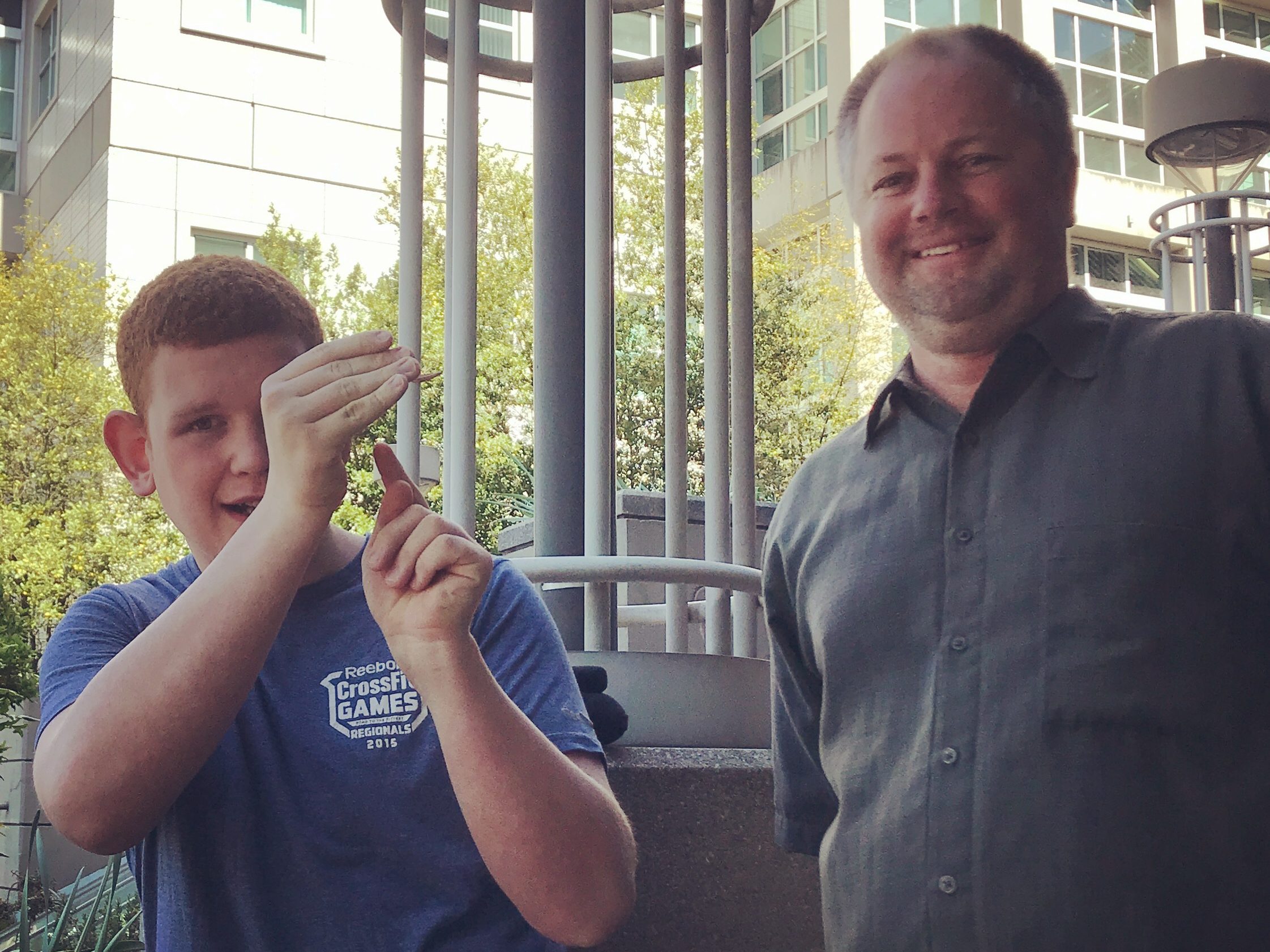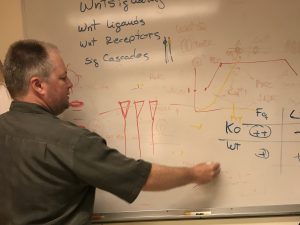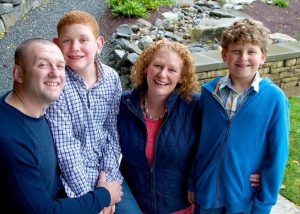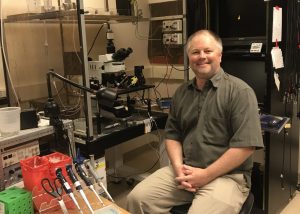Recently Laurie Bowler and her 19-year-old son Casey, who has Fragile X syndrome, visited FRAXA research grant recipient Dr. Tue Banke at his University of Washington laboratory. We hope you enjoy Laurie’s wonderful description of their adventure!

The hardest part today was Finding Tue. The University of Washington is foreign turf to me. I’m an Oregon Duck – we don’t play well with Washington Huskies 🙂
Lucky for the picture on FRAXA’s website, I knew the face was familiar when he walked toward me. Introducing himself as Tue, Not Dr. Banke, we fell into an easy conversation about how UW wasn’t home for either of us. He’s been here for about two years and it was probably 17 years ago when we had our son, Casey, across the street at the Center for Human Development and Disability, where we were told “he doesn’t appear to have autism but there is something nameless going on.” What a change a bunch of years make.
On the walk to the lab, we talked about families and moving and sunshine, changing languages, commuting by bicycle, and beginnings. Tue’s wife decided she wanted to move from Denmark to Seattle, got a job here, and the family came. It was such an easy conversation. We gradually got to Tue’s work on the Fragile X mouse model at Afraxis, back to Copenhagen, and to FRAXA’s grant. We arrived at the 4th floor lab which was hidden in a labyrinth of fluorescent-lit hallways.
Inside it’s the quintessential lab: beakers and biohazard labels, rows of tables, and one very quietly working researcher. Bringing Casey was quite literally introducing the bull into the china shop, so we were careful to stay at arms length from most of the work. We did walk to the far end where there are three stations of measurement tools, microscopes, and magic. This is where most of the work is done — harvested neural cells and glutamate receptors are inspected, tested, manipulated, and chronicled.
We joked in a way that’s probably only appropriate in a lab that’s it’s not so good to be a mouse here. Tue noted that the behavior of the Fragile X mouse and the typical or “wild type” (WT) mouse is very, very similar. The difference is seen in the shape and maturity of the terminal end of the axon of an individual cell. He said that there are Fragile X rats who have markedly different behavior from WT rats, but they are expensive and not any more useful in his type of research. He said for the most part, the drugs we use today to impact the glutamate system in humans act the same way in mice, and that is an important similarity.
We moved on to the whiteboard and talked about what they look for as far as shape and structure of neurons. They can only use a fresh neuron for testing, and once it’s no longer useful for testing they will examine it. It’s all the data they’re collecting that they hope will show results which they can publish.
We moved on to funding. Dr. Banke had his own lab in Denmark. Here he shares space with a UW faculty member who has assigned lab space. Without his own space and without funding from the University, he’s essentially a guest who’s on his own. FRAXA funding is critical. He could apply for NIH grant funding but too many people do and it’s far from a sure thing. FRAXA’s funding makes it possible for him to do this work, and when the grant ends, so could his work. He’s under pressure to produce actionable, repeatable, reliable results that have wider reach. If all is going well, he could be funded by FRAXA again. He could receive grant money from other places, but it’s unlikely UW will step in and carve out a a place of his own.
I relayed how important it is for me to understand this process. Without FRAXA funding, we could lose research and researchers. Without researchers, we lose any hope for treatments and a cure. To be a parent and to lose hope would be worse than the diagnosis itself. We did talk about FRAXA’s goal to network with funding sources more flush than the average family – which led us to the FRAXA Biotech Games.
He said he’s fairly new to the FRAXA family and wasn’t aware of the Games. I told him what little I understood about it – backyard games, relaxed atmosphere, sharing ideas, meeting players, and wooing the companies related to our quest. I told him that FRAXA understands that to fund this level of research, we can’t rely on strongman competitions alone. We need partnerships.
On our way back out of the lab, we stopped and talked with Abby, a postdoctoral fellow, who showed me slices of Fragile X mouse brain (they look like thin chunks of torn callouses). I shared our diagnosis story, from “Fragile X is too rare” from our geneticist to “Casey has big ears” from our ENT, and how hard it was to get answers – even with “experts” just a couple of blocks away. We talked about how Casey has Connexin 26 deafness and we were told there just couldn’t possibly be two genetic anomalies in one child. We talked about Sam, Casey’s little brother, not being a FX carrier or having the C26 gene. We talked about my dreams for them as they grow older, and how I want Sam to be able to move to Denmark if his wife wants to, and how caring for Casey shouldn’t be something that stops Sam from living his life.
Research affects more than just the kiddo — it affects the entire family. I really wanted them to have a face for Fragile X — they spend their day looking at thin slices of tissue under a microscope, but at the end of the day, there’s a kid. And a family. And their work is far-reaching and so so very important to us.
Thank you isn’t a big enough word for what they do, but I said it over and over anyway.



